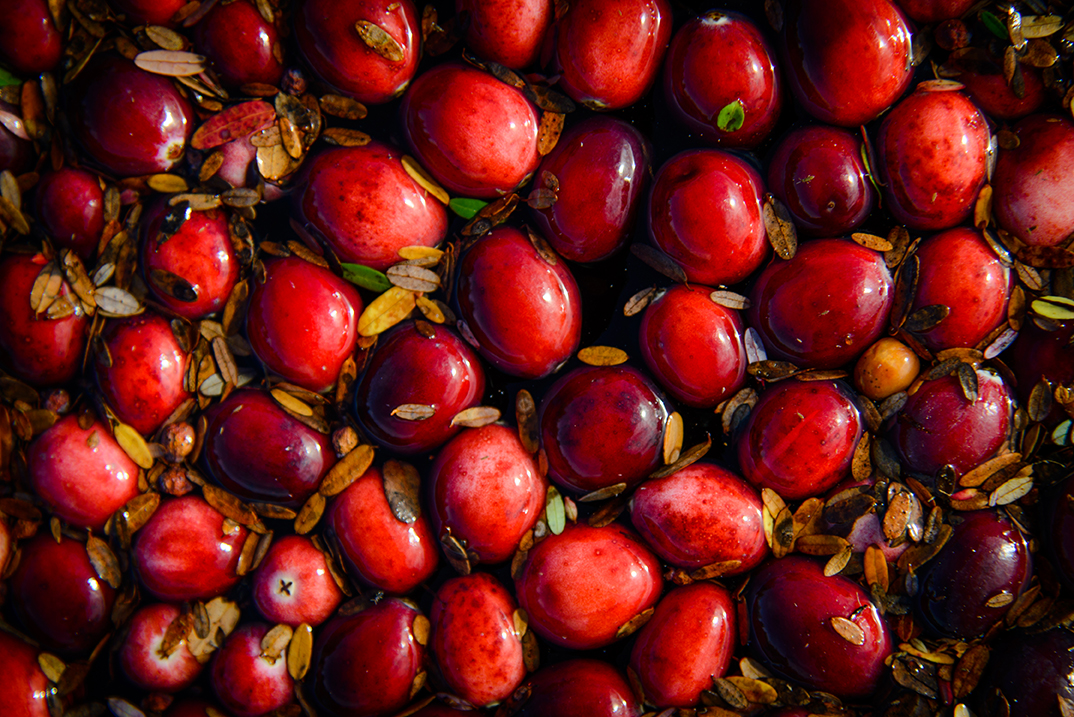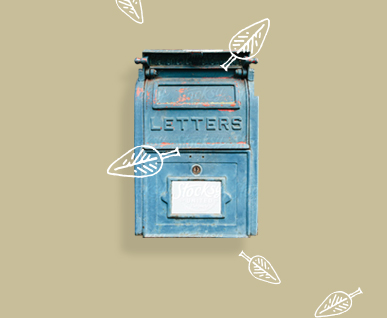As the star at the holiday table or the perfect partner to a dark chocolate dessert, cranberries have made a mark on our cuisine with their flavor and nutrition. Indeed, the production of this tart berry has taken off in Quebec in the past decade. Although we might be familiar with how strawberries, raspberries, and blueberries are grown, cranberry production is still a mystery to many. Let’s take a look at where they come from.
The myth of the aquatic plant
Cranberries are mistakenly thought to be an aquatic plant, when in fact they grow on land and require no more water than your lawn! So why do we so often see farmers wading up to their knees in pools of cranberries? Because cranberries do something unlike any other small berry when put in water: they float! Water is used only for harvesting, not ripening, so the fields are flooded only for a few days during the harvest period. This is an essential technique used by our cranberry farmers come harvest time!
Flooding for a better harvest
Cranberries are not picked by hand. That’s because there’s a much more efficient method to harvest the fruit: flooding the fields. After submerging the cranberry bushes, a special machine loosens all the berries, which float to the surface. The water level is then increased further, allowing the floating berries to be pushed to one end of the basin using a tool called a “boom”. From there, the cranberries are sucked into a pump and loaded onto trucks to be transported to a sorting and cleaning facility. Finally, they are sent to another location for packaging or processing. At Patience Fruit & Co, all of these steps are done right here in the Centre-du-Québec region.
Simple conditions
Cranberries need sandy soil with low pH and high drainage to achieve their full potential. They also love the sun! It’s best to plant cranberries early in the spring, when the temperature is still cool, as too much heat is detrimental while the plant is taking root. Given the sunlight and soil they need, cranberries will reward you with a nice berry harvest so why not make them a part of your garden?
Grow your own cranberries
There are a few simple steps you should follow to start your own miniature cranberry farm. First, note that fruit won’t appear before the third or fourth year of the plant’s life. Also, while cranberry bushes grows best in soil, you can also plant them in pots for pretty foliage.
- Mark out a 2 x 2 ft. square in your garden and dig a hole 8 to 12 in. deep.
- Use a mixture of equal parts peat moss and sand.
- In the early spring, plant your seedling, which should be between 1 and 3 years old.
- Water your garden when necessary: the soil should always be damp (without bogging, of course).
- Pick the berries in the fall once they’ve turned bright red!
- A 2 x 2 ft. plot should allow you to harvest 2.25 pounds of cranberries if you take good care of the plant.
You can find cranberry plants (the Latin name is vaccinium macrocarpon) in most nurseries. It’s a fun challenge for the experienced or even aspiring gardener!



